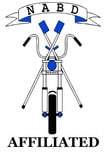iBiker for NI?
Posted on
An exciting new smartphone app designed to reduce the number of motorcyclists killed or seriously injured on the UK’s roads is now available.
The ‘iBiker app’, which has been funded by the DfT (Department for Transport in Great Britain), is available on the iPhone and Android mobile phones. In addition to featuring ‘myth busting’ equipment and maintenance videos with James Toseland, the former double World Superbike Champion, the app enables bikers to:
· Plan, plot, and save their rides/routes.
· Highlight points of interest including pubs, cafes, cash points, petrol stations and meeting points.
· Rate routes.
· Connect with the biking community by sharing information about their rides/routes via Facebook, Twitter, Flickr and other social networking sites.
The ap also highlights ‘the most risky roads and routes in Britain’ and provides interactive information and advice on how to ride safely and responsibly.
Similar to Ride It Right, iBiker is community driven and focused on the community it serves - riders can take ownership of the app and populate it with information that can be shared across the biker community. Users can get in touch with ibiker via www.twitter.com/ibikerapp. or visit www.facebook.com/facebook.
Gurminder Marwaha, who manages the app, says, “In terms of our plans for the app, we are very open to suggestions on how the app can be improved and what new features users would like to see. This app is for bikers and to remain a biker app it's important that the community tells us how it wants the app to develop. We will listen to all ideas.”
What About iBiker For Northern Ireland
Ride It Right has been in touch with the iBiker developers to see if iBiker works in Northern Ireland and the answer is yes!
So apart from on your travels outside Northern Ireland riders here can, add their own routes and places, plan, plot, and save their rides/routes and comments on others’ routes and places.
You can also highlight points of interests, including pubs, cafes, cash points, speed cameras, petrol stations, meeting points and much more.
However one application that is missing is the provision of video run-throughs of known collision hotspots, these provide commentary illustrating potential dangers, enabling riders to prepare for a ride on that route, and spot potential danger before actually riding it.
Early days yet but Ride It Right is looking at bringing iBiker here, to add to the 90 different routes videoed in the rest of the UK. Our own routes on the Ride It Right website highlights, The Antrim Coast Road – The Ards Peninsula – Newcastle and the Mournes.
To get iBiker here we are looking for sponsors/funding, a race “celebrity” to promote iBiker and for the support from Road Safety agencies.
Information



